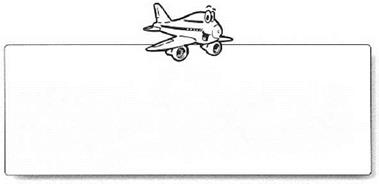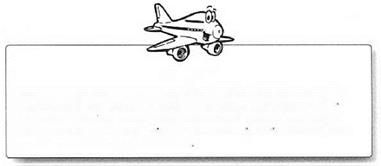Microbursts
In recent years, microbursts have been blamed on a number of fatal airline crashes, including the crash of Delta Airlines Flight 191 in Dallas in 1985. They are part of the normal life cycle of thunderstorms, but they remained a mystery until the 1970s.
Microbursts are narrow flumes of cold air a half – mile to two miles wide that gush downward from the bottom of thunderstorms. When the air strikes the ground, it sprays outward horizontally in all directions.
Microbursts can be insidious. Airplanes run the risk of flying into them during landing, because most other times during flight, planes fly above the clouds rather than below them, where microbursts are found. Because the plane is so low to the ground and slow in a landing configuration, this is also the phase of a flight when a plane would be most vulnerable to a violent burst of downward-rushing air.
The first sign of flying into a microburst is often what looks like an increase in airspeed on the airspeed indicator. In fact, if s the horizontal rush of air at the bottom of a microburst that causes this phantom speed increase. Most pilots instinctively pull back the throttle to try to hold the airspeed close to a safe landing speed.
That is the wrong thing to do. Very soon the plane passes into the downdraft region of the microburst. With the throttle reduced and the power setting low, the plane can be pushed down very fast, and in a jet engine, the spool-up time can be several seconds. Flying low, slow, and with reduced power, an airplane can be in real danger if the microburst happens to be lurking near the runway, as it was in Dallas when Delta Flight 191 flew in.
For small-plane pilots, a safe practice when a sudden, unexplained airspeed increase occurs would be to “go around.” During a go-around, a pilot adds full power, begins to climb to an appropriate altitude, and begins another landing approach. That option is always available to a pilot, and is almost always a safe way to handle a doubtful landing.
 Plane Talk
Plane Talk
In late 1999, one of the most unusual emergencies I’ve ever heard of took place at the Plant City, Florida, airport A Cessna 152 trainer and a Piper Cadet were both on final approach to land, but neither saw the other. About 200 feet off the ground, the Piper’s landing gear punched through the cockpit window of the Cessna and got stuck there. The Cessna pilot continued to the runway and landed, despite the airplane tire blocking his view. None of the four people in the two airplanes were hurt Now that’s a calm response to an emergency.
“Captain, the Passengers are Revolting”
Ask many airline pilots the worst part of flying a passenger jet, and some will probably say, “the passengers.” It’s partly a joke, but many pilots find that the majority of the hassles of an airline pilot’s job don’t stem from weather, mechanical trouble, or the rigors of living out of a suitcase. Most of the woes that keep pilots awake at night come from passengers.
In the past couple of years, passengers have begun to openly revolt against what some say is a case of airlines taking passengers for granted and being callous toward complaints about safety, comfort, and on-time performance. The phenomenon has a name: air rage.
Some recent incidents of air rage:
• A woman whose job is to travel on airlines checking the quality of flight crews’ performance allegedly slapped a British Airways flight attendant who tried to stop her from excessive drinking. The accused assailant also worked for British Airways.
• A college student reportedly had to be tied down after he got out of his seat during a flight, began offering passengers “eternal salvation,” and insisted on visiting the cockpit to bless the flight crew.
• Pop singer Diana Ross was questioned in London in 1999 after she threw a fit, claiming that a female security guard at Heathrow Airport had touched her breast during a search. According to witnesses, Ross hollered at the guard, then touched her on the breast in retaliation.
• A banker assaulted a flight attendant and defecated on a food cart. He was fined $50,000.
• A passenger on a Hungarian airline flight paid the ultimate price for air rage. He was tied to his seat by other passengers, and a doctor on board injected him with a tranquilizer. He died before the airplane landed, probably from a bad reaction between the tranquilizer and alcohol or other drugs in his body.
The airlines behave as though they have a monopoly, because at some airports and over some routes, they do have a monopoly in practice, if not in law. And with monopolies comes a certain arrogance and disregard of passengers.
|
Plane Talk Pilots may or may not have good reason to complain about passengers, but there are some occasions when passengers have legitimate gripes about the crew. In 1999, an airline captain was fired because he walked off the airplane, leaving a planeload of impatient passengers and a crew svondering what to do next The reason the pilot left: He hadn’t eaten for hours, and he was determined to get a bite to eat – …. ________________ |
Quality and courtesy of service gets worse every year, airlines sell more tickets than the plane has seats, and planes get more and more cramped as airlines try to stuff more passengers on every flight. Air ventilation is poor, luggage is lost or delayed, food is sometimes unappetizing (when it’s offered at all), inconsiderate parents let children cry and kick other passengers’ seats, and alcohol is sold to passengers who don’t handle it well. Some improvements are actually vetoed by airlines, who complain those improvements would cut into profits.
But the increase in air rage incidents, which British Airways alone says has risen 400 percent over the past three years, could be partly due to increased public attention. In other words, there’s a “buzz” in the media about air rage.
Needless to say, neither the airplane nor the airport is the right place for passengers to act out their anger. For reasons of safety, the FAA and other agencies have clamped down on misbehavior in airports and on airplanes. Bad behavior on a plane or in an airport can carry felony charges and possibly years behind bars.
Whether we like it or not, the United States government is looking into airline shenanigans and the passenger rage they provoke. Some airlines have promised, on their honor, to make things better. Organizations supported by the airlines say they’re satisfied with the promises, while passenger advocates remind us that we’ve heard
 these promises from airlines before. In the end, airlines will probably resist any attempt to force them to clean up their acts.
these promises from airlines before. In the end, airlines will probably resist any attempt to force them to clean up their acts.
Plane Talk
Airline cockpits are pressurized to altitudes of about 5,000 to 8,000 feet, meaning the body only gets as much oxygen as it would if it were high on a mountain. The low air pressure has a magnifying effect on alcohol, making a small amount of wine, beer, or cocktails seem like a more potent drink. In other words, a slightly tipsy passenger on the ground can turn into a raging drunk in the air
Here’s some tips that will help fend off air rage:
• Call the airline before you leave home to make sure your flight will depart on time. If your flight is delayed, don’t leave for the airport until later so you won’t be stewing in the terminal.
• Write down your ticket confirmation number somewhere so that if you lose your ticket, airline computers can find your records easily.
• Get out of line. If your flight is cancelled or delayed, while your fellow travelers are boiling in line, get on the phone with your travel agent and get him or her to do the work for you.
• If you change travel plans a lot, carry a flight guide to help you make alternate plans.
• Bring your own munchies, so if the plane is late you’re not going to starve, and you won’t have to be robbed by exorbitantly overpriced airport restaurants. Besides, whatever you bring is bound to be better than any meal served in coach class.












